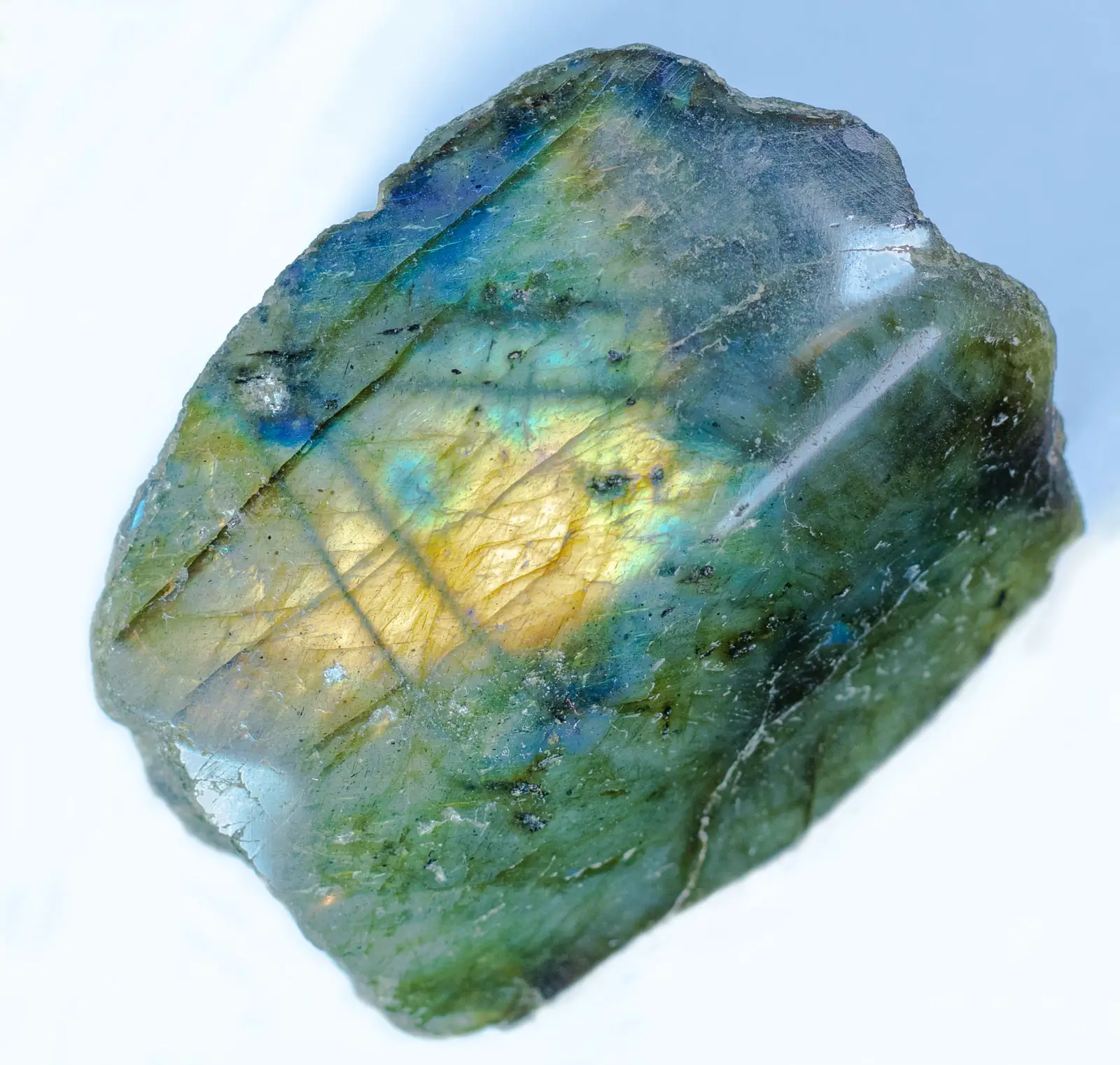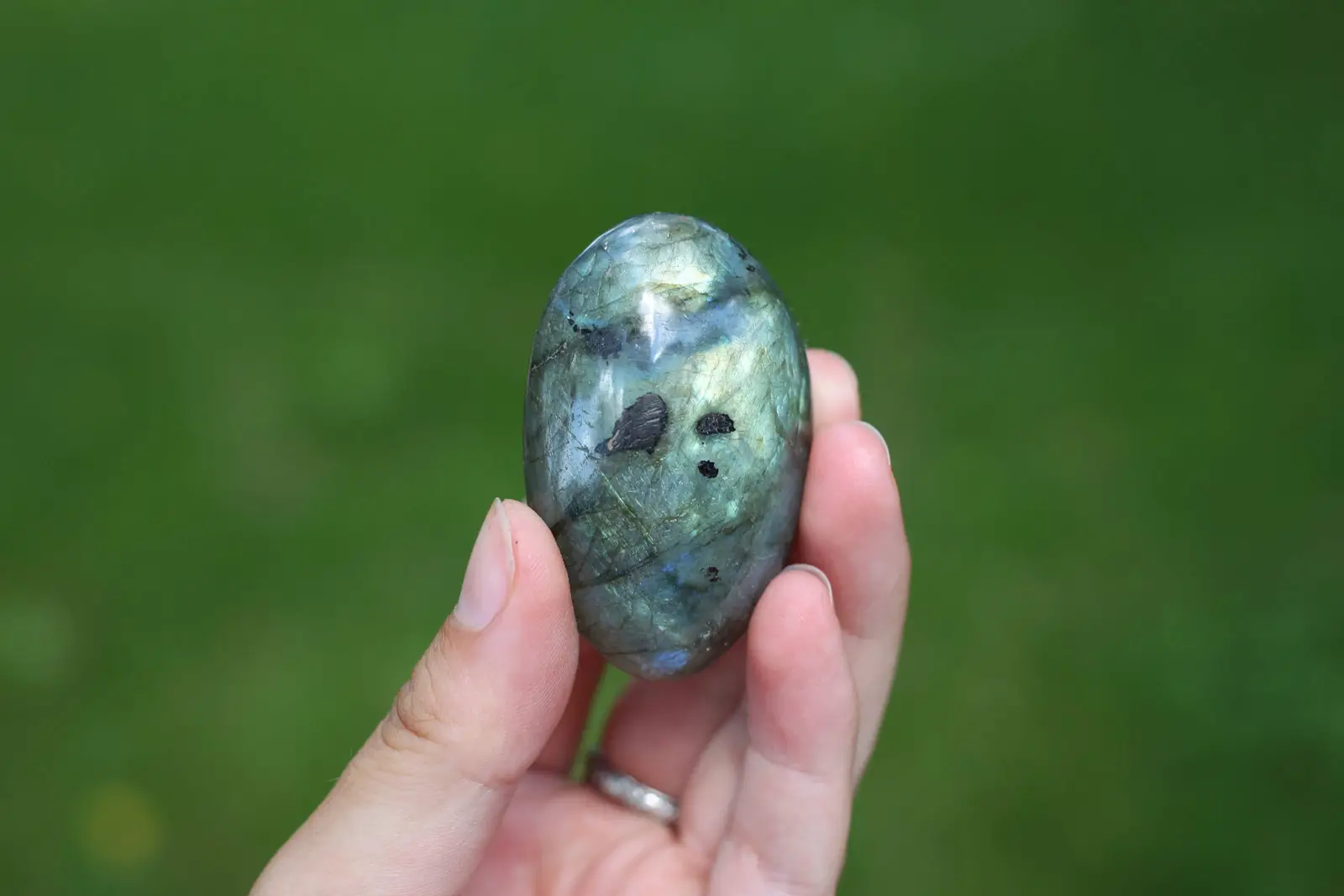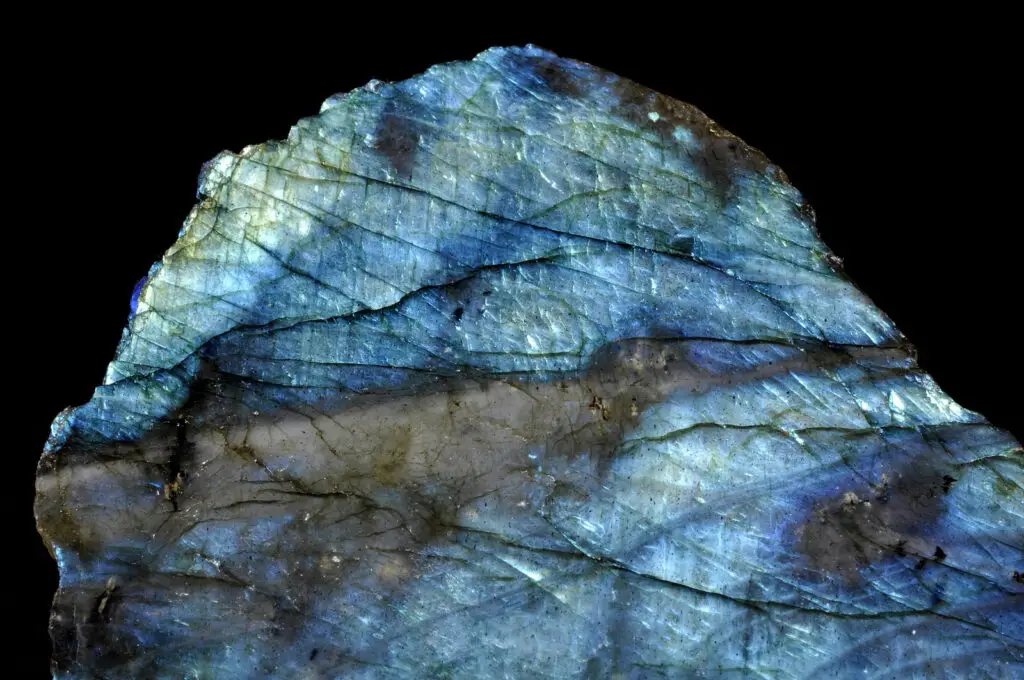Have you ever been watching HGTV (or other remodeling or reno show) and been struck by the beauty “iridescent, blue-green stone” they’re using for their backsplash and kitchen countertops? Odds are that the stone you’re seeing there is labradorite! But what exactly are they?
Labradorite is a type of granite that is absolutely stunning and becoming increasingly popular in kitchen countertops. It has a unique, iridescent quality that really makes it stand out from other types of granite. Its awe-inspiring beauty and durability make it an ideal choice for any kitchen.
If you’re considering a labradorite countertop but not sure if it would be the right choice for your design needs, then this article will offer all the information you need. I’ll provide information on characteristics, maintenance, pricing, and more!
By the way – before we get too far along here, if you want to connect with other homeowners and builders and get more great ideas for your home to make your space the best join my free private Facebook group, Remodel Reality here.

Origin And Characteristics Labradorite Kitchen Countertops
Labradorite is a type of igneous rock that is found in numerous locations around the world, primarily Labrador, Canada. This precious material offers a stunning display of colors called ‘labradorescence’, where iridescent flashes of blues, greens and yellows ignite with the light. This type of stone has a pearl-like luster on cleavage faces and its surface displays schillers or chatoyancy, which means it has a unique milky, bluish-colored luster or glow that appears to radiate from beneath the stone’s surface.
When it comes to labradorite kitchen countertops, durability is not an issue as long as you stay within certain limitations. With a Mohs hardness between 6 and 6.5, this gemstone can withstand most kitchen activities except for those involving very sharp objects that may scratch the surface to some extent.
Due to its limited variation recommended for countertop use, labradorite should generally be used in small sections or spread out into tiles as medium stones. Laboratory tests have shown that this material is resistant to staining when exposed to dishwasher solutions or coffee spills, making it a great choice for any kitchen project.
To maintain labradorite’s rich beauty over time and reduce damage caused by day-to-day activities such as scrubbing pots and pans on the countertop surface; it is highly recommended to use sealant very often (it should be done at least once in six months). With proper maintenance and sealing procedures, this beautiful stone can continue to dazzle its surroundings for many years down the road!
Color Options For Labradorite Kitchen Countertops
Labradorite kitchen countertops are no exception to the wide range of high quality stones used for home renovations. This semi-precious material offers some of the most unique color variants, ranging from medium and dark grays, aqua to yellow tones as primary solid colors; yet with a mesmerizing iridescent glow that can vary from blues, aquas, coppers, yellow to oranges, purples and fuschia.
Due to its versatile nature of densities (from light to dark grays), labradorite is able to be tailored according to custom needs. Most often, kitchen countertops consist of medium stone density and moderate blue/green hues with copper or orange iridescence. Formulations can also be created using mixtures of pigments in order to achieve specific patterns.
No matter what your preferences are, labradorite never fails to impress. Its stunning vibrant display stands out amongst other more traditional types of stones and is sure to add an aesthetically pleasing touch in any area in need of renovation.
Labradorite Slab Characteristics
Labradorite countertop slabs are highly sought after for both commercial and residential projects due to their unique characteristics. This semi-precious material is formed from a variety of mafic igneous rocks with a medium to dark gray base color, sometimes with lighter or darker areas that can have an iridescent display of blues, aquas, coppers, yellow to oranges, purples and fuschia.
The thickness of labradorite slabs varies from 18mm to 30mm depending on the desired application. For kitchen countertops, it usually comes in 108” X 36” size standard; although custom sizes are available. Completed pieces can be further customized by applying different surface finishes such as honed (matte finish), polished (shiny gloss), brushed (satin finish) or antique finish.
Labradorite is resistant to staining when exposed to mostly common substances found in the home like dishwasher solutions or coffee spills. It also has a Mohs hardness between 6 and 6.5; making it very durable against most kitchen activities except for sharp objects that may cause some scratches in its surface over time. With proper maintenance and sealing procedures, this beautiful stone can continue to dazzle its surroundings for many years down the road!
Costs for Labradorite Kitchen Countertops
Labradorite kitchen countertops are a great choice when renovating any home. Its unique color display and shimering iridescence can add a certain class to even the most traditional of kitchens.
However, labradorite as a newcomer in the market can be quite pricey; with expense for material alone ranging from $55 to $170 per square foot. The average cost for installation and fabrication can easily climb up to around $200 per sq. ft., making it one of the more expensive countertop materials out there.
One way to attempt alleviating some of these costs is by researching different vendors or manufacturers who may offer better deals on labradorite slabs due to special offers or discounts they might have. Additionally, materials such as quartz composites are now offering similar looking results but at much lower prices; so those would also be worth considering if budget is an issue.
No matter what choice you make, just remember that this is a long-term investment so finding the right balance between aesthetics and price will help you get the most value out of your decision in the years down the road!
Durability And Maintenance For Labradorite Kitchen Countertops
Labradorite kitchen countertops are just as durable as many of the other popular materials such as granite, quartz, and marble. Its non-porous surface makes it resistant to staining; however, adequate care and maintenance is still required to keep it looking its best.
To protect your labradorite countertop from heat damage, always use a trivet or hot pad when placing hot pots and pans on its surface. It is also important to wipe up spills immediately; letting them sit for extended periods of time can cause them to permanently stain the countertop. And finally, although it is quite strong, avoid sitting or leaning on it as this could cause cracks or chips in the material.
Labradorite countertops will retain their glossy finish for many years; however, resealing every few years will help extend its lifespan even further. When cleaning, avoid using harsh chemicals as these can break down the sealant and dull the finish. A simple mixture of water and dish soap is all that is needed to keep it looking sparkling new!

Is Labradorite a Good Countertop Choice?
Labradorite is a popular choice for many who are looking for something new in their home renovation. Its unique color display and shimmering iridescence can make it look like a statement piece from another world, but is it the right countertop material for you?
Durability wise, labradorite compares favorably to other popular materials such as granite, quartz, and marble. It’s easy to clean and only requires simple maintenance such as resealing every few years. However, one disadvantage of using labradorite is that it is expensive and requires professional installation. Additionally, bear in mind that although it is quite tough compared to other soft gemstones; it can be prone to scratching or cracking if not handled with care.
In the end, when considering a labradorite countertop, these pros and cons should be carefully evaluated in order to make an informed decision based on your personal preference and budget restrictions.
Pros of Labradorite Kitchen Countertops
| Advantage | Explanation |
|---|---|
| Unique and Exotic Look | Labradorite is a semi-precious gemstone with crystal infusions and an exotic look, which is becoming increasingly popular as an alternative to granite countertops. |
| Iridescent Display of Colors | Labradorite has a unique iridescent display of colors called labradorescence, which ranges from blue, dark blue, blue black, light to dark aqua, copper, yellow, orange, purple, and fuschia. |
| Durability | Labradorite is durable and has a Mohs hardness between 6 and 6.5, making it heat-resistant and scratch-resistant. |
| Non-Porous | Labradorite is non-porous and is highly resistant to stains, making it easier to clean. |
| Versatility | Labradorite is versatile and can match rustic or modern kitchen styles, and can be paired with wood, white or painted cabinets, and various backsplash options. |
Cons of Labradorite Kitchen Countertops
| Disadvantage | Explanation |
|---|---|
| High Cost | Labradorite is considered a luxury material and is more expensive than other kitchen countertop materials, with costs ranging from $50-$200 per square foot. |
| Limited Availability | Labradorite is much harder to find than standard granite and is not readily available in all areas. |
| Professional Expertise Required | Labradorite requires professional expertise for installation and is considered a type of house jewelry. |
| Sensitive to Acid and Heat | Labradorite is sensitive to acid and excessive heat and requires proper maintenance and care, such as resealing every 3-5 years to maintain its glossy finish. |
| Heavy | Labradorite is quite heavy, so additional bracing might be required. |
Final thoughts on Labradorite kitchen countertops
Labradorite kitchen countertops provide a subtle yet luxurious statement for any home. With its unique shimmering color display and exotic appearance, it is sure to be a conversation starter in any room.
Durability is not an issue either as labradorite is just as strong as popular materials like granite and quartz when properly cared for. It is also easy to maintain; resealing every few years will keep its glossy finish intact and all you need to clean it is a simple mixture of water and dish soap.
When deciding on purchasing a labradorite countertop, there are certain things that should be taken into consideration such as personal preference, budget, and the cost of professional installation. As long as these factors are evaluated beforehand, labradorite can make a stunning addition to your home!
Next Steps
Want to join others who are creating the most amazing home redesigns & renovations and get more tips, tricks and hacks on how to make your home the best it can be?
Join my brand new free private Facebook group, Remodel Reality to connect with other people like you to make your space the best!






